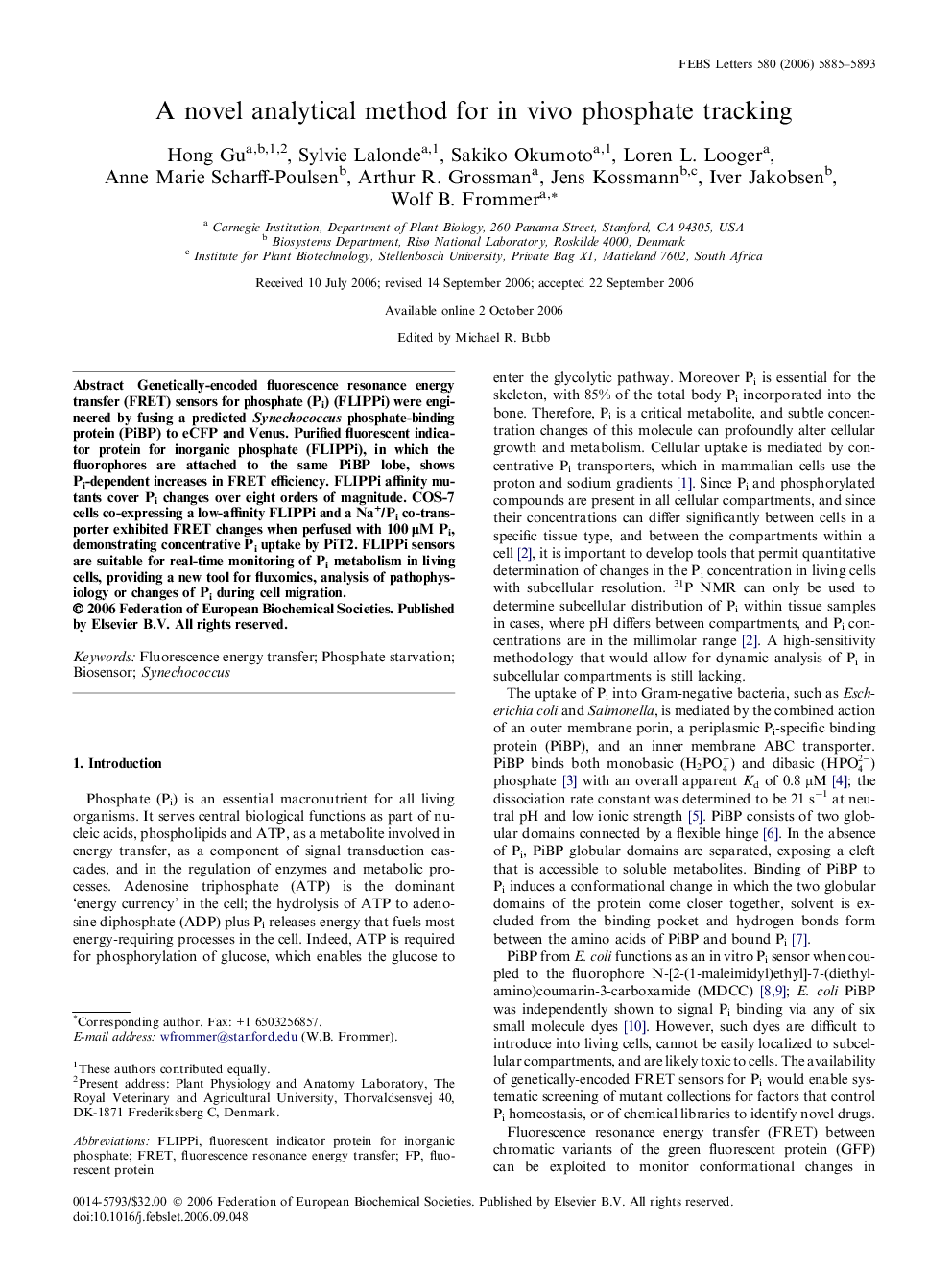| Article ID | Journal | Published Year | Pages | File Type |
|---|---|---|---|---|
| 2050300 | FEBS Letters | 2006 | 9 Pages |
Genetically-encoded fluorescence resonance energy transfer (FRET) sensors for phosphate (Pi) (FLIPPi) were engineered by fusing a predicted Synechococcus phosphate-binding protein (PiBP) to eCFP and Venus. Purified fluorescent indicator protein for inorganic phosphate (FLIPPi), in which the fluorophores are attached to the same PiBP lobe, shows Pi-dependent increases in FRET efficiency. FLIPPi affinity mutants cover Pi changes over eight orders of magnitude. COS-7 cells co-expressing a low-affinity FLIPPi and a Na+/Pi co-transporter exhibited FRET changes when perfused with 100 μM Pi, demonstrating concentrative Pi uptake by PiT2. FLIPPi sensors are suitable for real-time monitoring of Pi metabolism in living cells, providing a new tool for fluxomics, analysis of pathophysiology or changes of Pi during cell migration.
